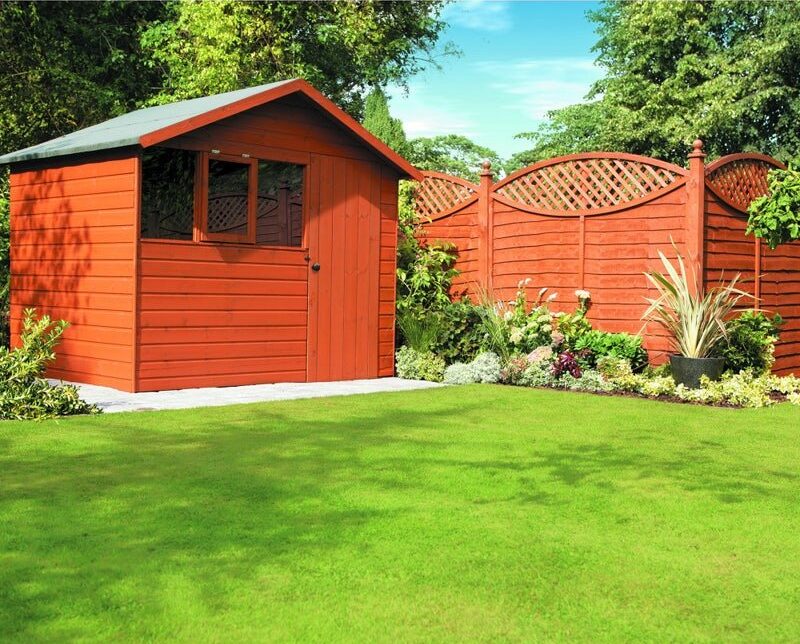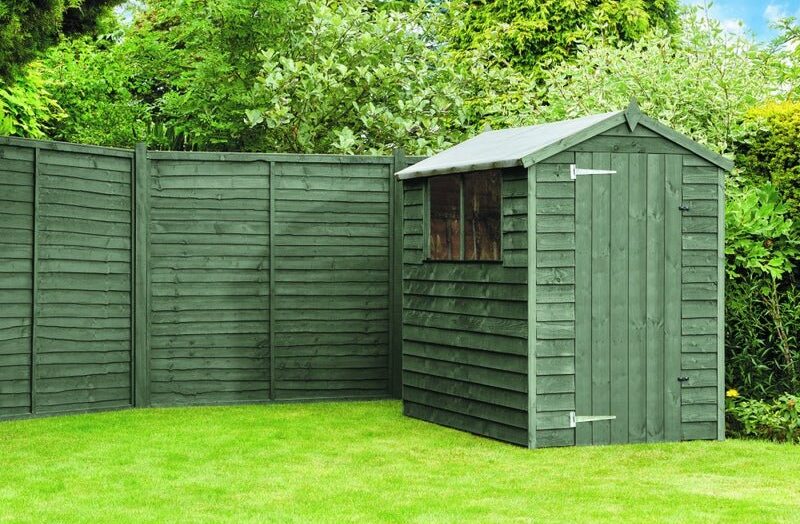Painting a fence can be done in a few different ways. You can find out how to paint a pence and more via this simple guide.
Table of contents:
- What do you need to paint a fence?
- How to prepare for fence painting
- How to paint a fence with a sprayer
- How to paint a fence with a brush
- How to paint a fence with concrete posts
What do you need to paint a fence?
Painting a fence can be done via brushing or spraying. Although spraying may require the need for smaller brushes to cover the little nooks and crannies.
Fence spraying
If you’re choosing to paint a fence with a sprayer, make sure you have sprayable fence paint. The weather is arguably more important when it comes to this painting method too. Such elements like wind can cause the paint to fly in a different direction and land on other features of your garden. So prepare accordingly.
Fence paint brushing
Painting a fence with a brush can take a long time. So this method is preferable for those smaller or more difficult sections of the fence to paint. This could be anything from edges to corners, fencing near windows you don’t want to risk covering in spraying paint and other areas that aren’t typically easy to cover.
What is the best way to paint a wooden fence?
This will truly depend on the size of the task and the difficulty of the job. So approach the project with suitable planning and review whether the job can be done more easily via paint spraying, paint brushing or both.

How to prepare for fence painting
Before painting, you will need to make sure you have protective equipment, especially when spraying paint, as this can risk splashes into the eyes and clothing stains. However, if you have any old clothes you can wear without being concerned about stains then this is fine.
Here’s how to prepare your fence for painting!
Step one: If you have any plants or foliage you want to protect, you will need to make sure they’re dealt with. You can do this by covering them with a plastic sheet or dust sheet, trimming back the plants or tying any foliage back with string. You can also use masking tape and/or newspaper to cover any handles or metal hinges etc to protect them from the paint.
Note: If there are any other garden features nearby the fence you want to protect, make sure to cover those also.
Step two: Clean and clear the fence of debris. Preferably use a brush to remove dirt or splintering bits of wood. For algae or any other similar dirt substance, you can use a damp cloth with a general cleaner to clean the wood – be careful of splinters by wearing gloves!
Step three: If there are any sections of the fence that are rotten, make sure to replace them.
Note: Smaller sections with damage can be repaired with a wood filler.
Step four: If there are any old nails or screws sticking out of the fence panels, make sure these are removed and replaced where needed to ensure a cleaner and safer appearance.
Step five: Sand down the wood to ensure any splintery or rough sections are smooth and that any newly placed sections of the fence are flush with the older pieces of fence.
Step six: Prime the fence with a suitable wood primer and let it dry. Letting the primer dry allows the end result to last longer on top of improving the final paint appearance.
Note: It is advised to do a patch test of the paint prior to total painting as this can give an idea of what the colour will look like when it dries.
How to paint a fence with a sprayer
Here’s how to paint your fence with a sprayer!
Step one: When using a sprayer to paint, it will most likely make covering the fence evenly much easier. Make sure to paint in the direction of the wooden pains as this ensures a smoother appearance. It also allows you to cover a lot of the surface area easily without having to continuously go back and forth with the paint spray.
Step two: Using a brush, ensure any smaller sections that have not managed to be covered by the paint are painted over. This could be between the panels and the posts or any other awkward areas that couldn’t be reached by the spray.
You can also use the brush to make sure that the top of the fence posts are covered by gently dabbing the brush against the wood to ensure it goes on top of it.
Note: If a second coat is needed then do so only when the first layer is dry, but typically fence paint can be applied once.
Step three: Wait for the paint to dry on the fence and clean any brushes you’ve used to ensure they’re not damaged for future use.
There you have it! A newly painted fence with the help of a fence sprayer!

How to paint a fence with a brush
Here’s how to paint your fence with a brush!
Step one: Make sure you have a large paintbrush to cover as much of the fence panes as possible, following the direction of the timber grain.
Note: Be generous with the paint to ensure there is enough to cover the timber – watch out for paint drips as you do so!
Step two: Use a smaller brush to ensure difficult sections not covered by the paint are painted over. These areas could be between the panels and the posts or any other awkward areas that couldn’t be reached by the larger brush. Use the brush to also make sure that the top of the fence posts is covered – do so by gently dabbing the brush against the wood to ensure it goes on top of it.
Note: If a second coat is needed then do so only when the first layer is dry – typically fence paint can be applied once.
Step three: Wait for the paint to dry on the fence – clean any brushes you’ve used as this can ensure they’re not damaged for future use.
There you have it! A newly painted fence with the help of a brush.
How to paint fence panels with concrete posts
Fences are commonly built with timber posts alongside timber panels. So when you have a fence with concrete posts, you might want to protect these. You can do so by covering the posts with masking tape or newspaper to shield them from the paint.
The manufacturer’s instructions can vary so confirm with the manufacturer if in doubt.














